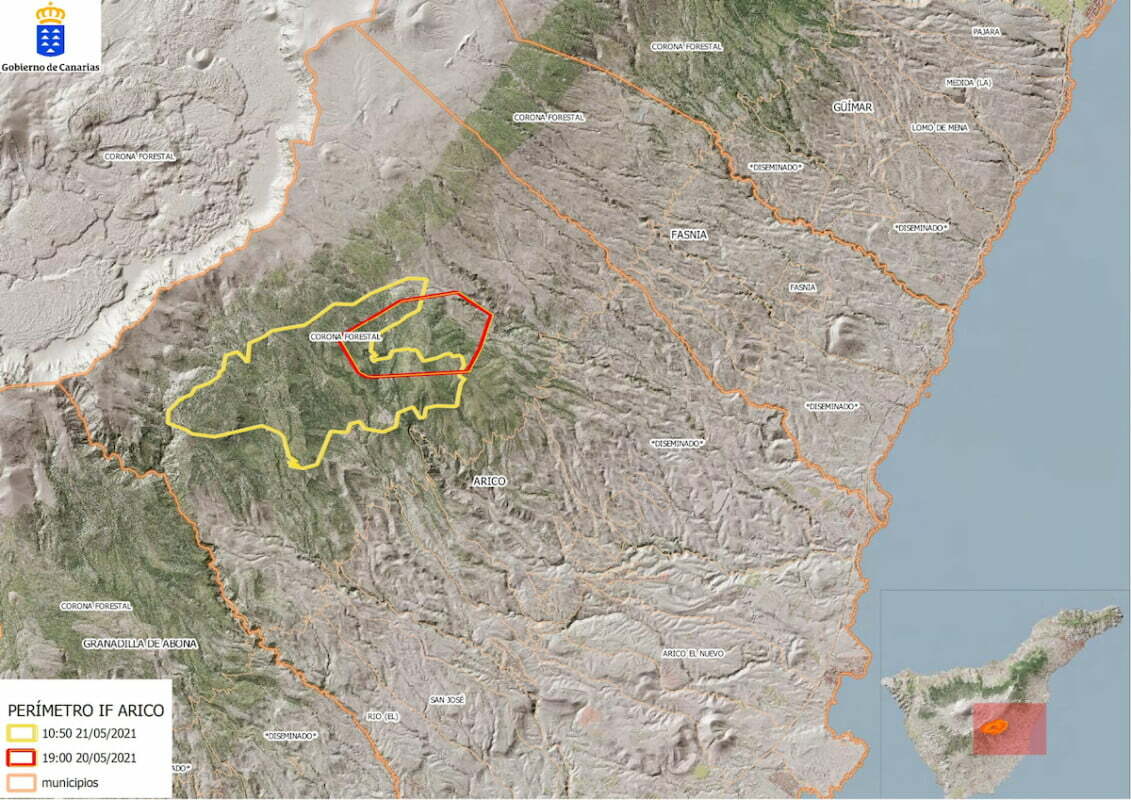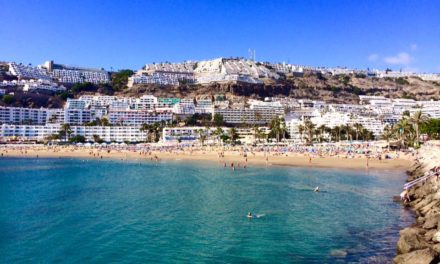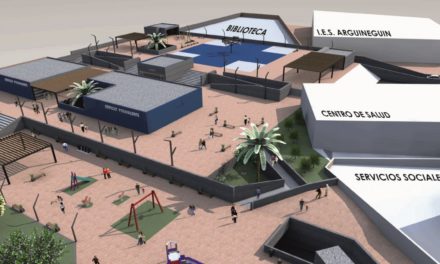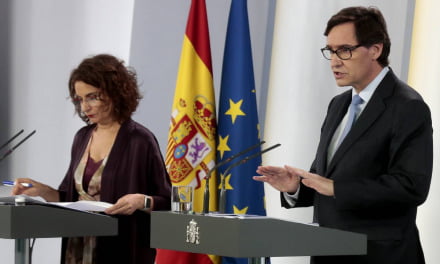Ángel Víctor Torres, president of the Canary Islands, travelled to the Tenerife municipality of Arico today to learn in detail about the forest fire that has affected that area since noon on Thursday. Torres highlighted the effort that public administrations have made from the beginning to try to perimeter the blaze, control it and extinguish it as soon as possible. This effort has been joined by six helicopters, a seaplane and some 300 service personnel, including members of the Military Emergency Unit (UME), firefighters, environmental agents and security forces, from five islands across the archipelago. Two more seaplanes were on their way this Friday to join the effort as we head into the second night of the fire.
 These differences, said Torres, lie in the fact that it is not yet the summer season “and, therefore, we have not been dry for weeks, but quite the opposite, since there have been recent rains, this helps and is favourable.” In addition, he pointed out that there has been no heat wave either, as there had been before the preceding fires; humidity in this case is higher than it was then too, and the forecast indicates that this will continue to rise “over the next few hours”. Another reason for positivity is that “it is a surface fire,” he said “so the pinecones have not spread the flames any further and basically pine needles are being burned,” he explained.
These differences, said Torres, lie in the fact that it is not yet the summer season “and, therefore, we have not been dry for weeks, but quite the opposite, since there have been recent rains, this helps and is favourable.” In addition, he pointed out that there has been no heat wave either, as there had been before the preceding fires; humidity in this case is higher than it was then too, and the forecast indicates that this will continue to rise “over the next few hours”. Another reason for positivity is that “it is a surface fire,” he said “so the pinecones have not spread the flames any further and basically pine needles are being burned,” he explained.
Temperatures are expected to drop during this Friday evening and on Saturday. However, there serious concerns regarding winds gusting up to 50 km/h, with the potential for 70 km/h or more, as well as the mountain topography which presents very difficult terrain, like in the Barranco del Río (between Arico and Granadilla), as the level of smoke prevents aircraft from operating normally. The difficulties with the terrain requires extreme caution from the ground personnel, as rock falls can occur.
Torres appealed to the public not to approach the area and that everyone take maximum precautions, although it has not been necessary to evacuate any residents, because the situation does not currently affect any homes. This has also facilitated a very focused approach to fighting the fire by concentrating all efforts on the flames instead of having to divide efforts between fire fighting and evacuations, however a slight risk has begun to emerge that the blaze could reach inhabited areas of nearby Granadilla. It is for this reason that so much resource has been deployed to try to stop the fire from reaching the Barranco del Río.
#IFArico Tenerife – uncontrolled but favourable
The forest fire #IFArico continues to be tackled by more than 300 service personnel from across The Canary Islands, seven aircraft including two seaplanes and two more on the way, with more than 2,600 hectares affected and according to the latest reports remains "totally uncontrolled".
Thankfully there have been no casualties reported and the fire remains well away from population centres although it has climbed the slopes into the Teide National Park.
Read More: https://thecanarynews.com/2021/05/ifarico-tenerife-forest-fire-still-out-of-control-as-fire-crews-head-into-their-second-night-tackling-the-blaze-on-the-mountain/
Posted by TheCanary.TV on Friday, May 21, 2021
 Jorge Parra, a technician from the Canary Islands Government’s 112 General Directorate of Security and Emergencies, has said tonight that the fire has two well-defined flanks, saying that this Friday “the large amount of smoke has prevented work along the right side, except for the Foca (seaplane)”
Jorge Parra, a technician from the Canary Islands Government’s 112 General Directorate of Security and Emergencies, has said tonight that the fire has two well-defined flanks, saying that this Friday “the large amount of smoke has prevented work along the right side, except for the Foca (seaplane)”
Parra said plainly, just before sundown this evening that “the fire is totally out of control” having moved into the Teide National Park area, but that the impact has been minimal because the vegetation is scarce and so there is no fuel to drive the fire. Wind is the main concern for gaining control of the flames.
At this time, no evacuations have had to be carried out and no populated areas have been affected. The Guardia Civil are investigating the cause of the fire, having already identified the precise point where it originated.
 The seven aircraft deployed have been making trips all day between water sources and the blaze, dousing the forest an estimated 300 times throughout the day, though rough sea conditions meant that towards the end of the afternoon it was no long safe for the seaplanes to recharge with seawater, meaning they needed to land for refilling at the airport. More than 300 ground troops have been deployed and around 130 will remain fighting the perimeter through Friday night and into Saturday morning, when at least two more aircraft are expected to join.
The seven aircraft deployed have been making trips all day between water sources and the blaze, dousing the forest an estimated 300 times throughout the day, though rough sea conditions meant that towards the end of the afternoon it was no long safe for the seaplanes to recharge with seawater, meaning they needed to land for refilling at the airport. More than 300 ground troops have been deployed and around 130 will remain fighting the perimeter through Friday night and into Saturday morning, when at least two more aircraft are expected to join.
The current perimeter around the fire now stretches for 25 kilometres covering a surface area of more than 2,600 hectares (10,000 acres), though not all of that land is though to have been burned.
The fire this evening occupies an area of more than 2,600 hectares, with no defined perimeter it remains uncontrolled. This is the most daunting factor as the teams head into their second night battling the flames which have this afternoon reached the Teide National Park. Some small solace has been taken from the fact that the fire is moving through an area of broom and scrub, and not of pine forest, allowing for the greatest efforts to be concentrated along the southern flanks.
Torres spoke to journalists alongside Spain’s Government delegate in the Canary Islands, Anselmo Pestana; the president of the Cabildo de Tenerife, Pedro Martín; the Minister for Public Administrations, Justice and Security, Julio Pérez, and Mayor of Arico, Sebastián Martín, among other authorities.
 Blaze within a 25 km perimeter
Blaze within a 25 km perimeter
This forest fire, which started at around 11:45 am on Thursday may 20, is still active and with a perimeter stretching for about 25 kilometres, although not the entire forest has been affected due to these being surface flames, which are not as virulent as crown flames, although this is generating a lot of smoke.
More than 300 ground personnel are currently involved, from the fire fighting teams of the Cabildo de Tenerife, the Consortium of Firefighters and the EIRIF teams of the Government of the Canary Islands based in La Palma, El Hierro and La Gomera, UME, BRIF Forestry Brigades based in La Palma and more from the Cabildo de Gran Canaria have all participated since yesterday. Various members of the security services are also directly involved including members of the Plicia Local, Guardia Civil and the General Corps of the Policia Canaria, are taking care of access control tasks. They are joined also by a Red Cross presence as logistical support.
 A total of seven air resources -four helicopters from the Canary Islands Government Emergency and Rescue Group (GES), one from the Cabildo de Tenerife, a seaplane from the Air Force and a Civil Guard helicopter, -for air coordination tasks-, have been in action between yesterday and today despite the large amount of smoke hindering their work at the head of the fire. Tomorrow two new seaplanes requested from the Ministry of Ecological Transition and Demographic Challenge are expected to join the extinction tasks.
A total of seven air resources -four helicopters from the Canary Islands Government Emergency and Rescue Group (GES), one from the Cabildo de Tenerife, a seaplane from the Air Force and a Civil Guard helicopter, -for air coordination tasks-, have been in action between yesterday and today despite the large amount of smoke hindering their work at the head of the fire. Tomorrow two new seaplanes requested from the Ministry of Ecological Transition and Demographic Challenge are expected to join the extinction tasks.
Ground and air troops have been concentrated since early this morning along the left flank of the fire, where work is being carried out with greater intensity. The advance of the fire to the north (Teide National Park) is being monitored by forestry brigades, but no action has been taken. The focus is on the southern flank to try avoid populated areas from being affected, as well as on the western flank, in the area of the Barranco del Rio ravine, where the fire could well advance due to the wind and humidity conditions in the area.
The fire remains located in the higher areas of the municipality of Arico, several kilometres from the nearest population centres, so for the moment it has not been necessary to carry out any evacuations. There are also no cuts or closures to roads in the municipality, although some may have visibility problems due to the smoke generated by the fire and the population has been asked not to use nearby roads to facilitate the transit of emergency vehicles.
The weather forecast for Friday was for a general NE wind, with average speeds 10-30 km/h and maximum gusts 40-60 km/h, tending to blow more from ENE in the afternoon, at about 2,000 meters of altitude. In the area of the fire, the general wind conditions are also affected by the relief of the terrain which tends to turn the flow to the East. There is concern about a possible increase in the winds through the night tonight.










